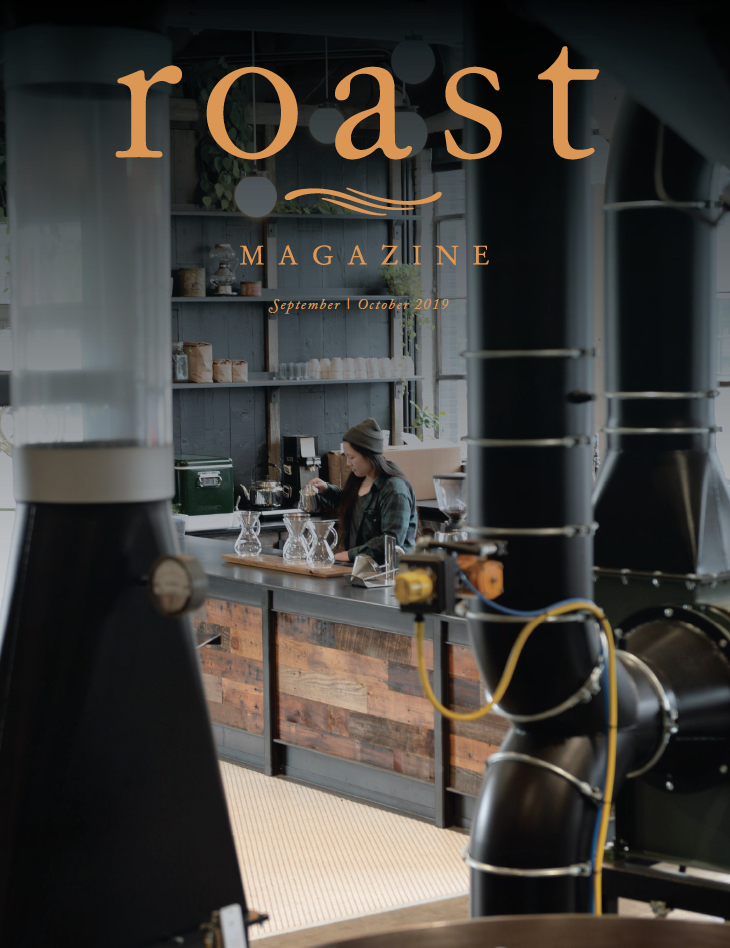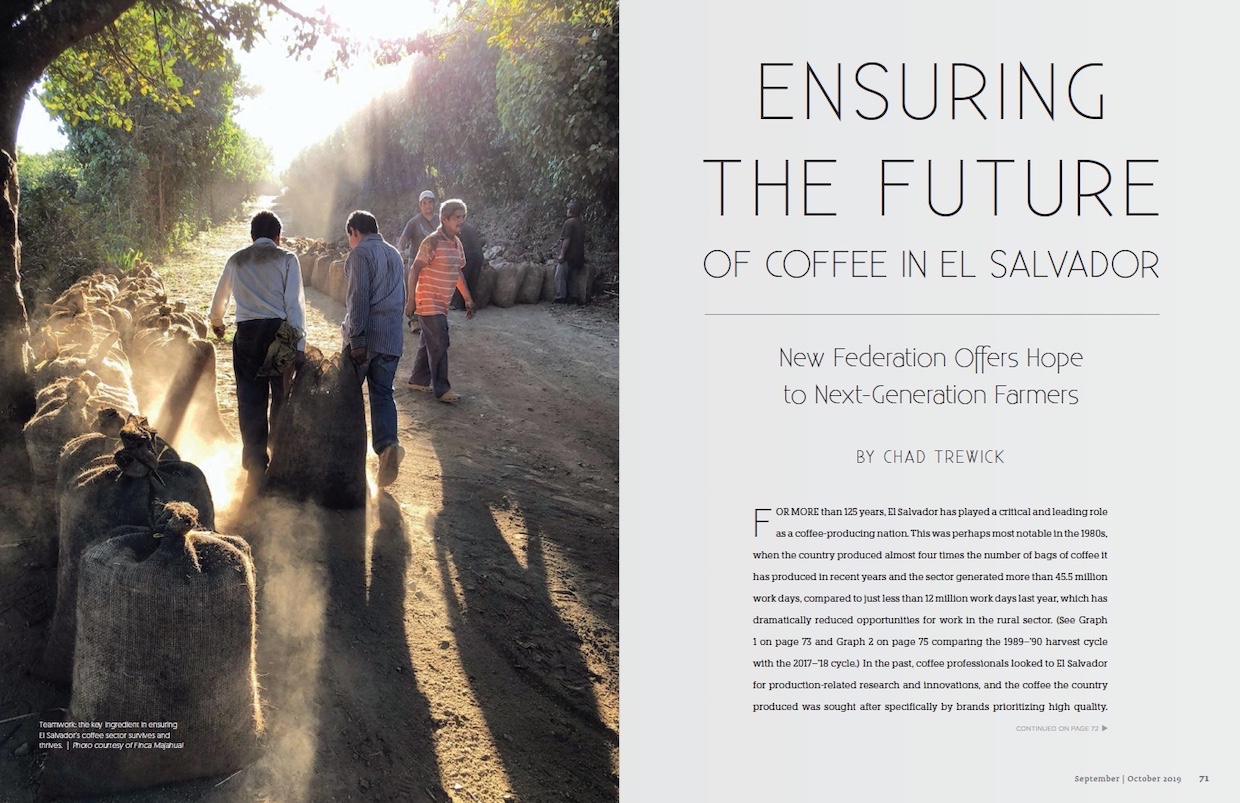The September/October 2019 issue of Roast has been released, featuring coverage of key principles in sensory science in coffee, seed viability and its relationship to cup quality, and the emergence of Yunnan, China, as a producing and consuming country for high quality coffee. The September/October issue also takes a look at a new federation in El Salvador that is working to ensure the future of the country’s specialty coffee sector.
Roast subscribers receive complimentary digital access. Subscribe to Roast, or purchase the print version of the issue here.
Inside This Issue
In “The Sensory Evaluation of Coffee: Sensory Science Principles in Action,” Olivia Auell, a sensory scientist at Synergy Flavors, and Dr. Jean-Xavier Guinard, a professor of sensory science at UC Davis, provide an in-depth look at descriptive analysis and consumer testing through the lens of coffee. The article looks at cupping and sensory science as methods of evaluating coffee — which are both used to identify quality and attributes, but serve different purposes — giving coffee professionals clarity on each method, and when to use them in practice.
Coffee quality is a composite of many different factors. Many of these are somewhat objective, like acidity, but several of them are derived from preference rather than something measurable. Evaluating quality is a mix of descriptive (What is it?) and hedonic (Do I like it?) tasks. Because of this, quality is difficult to represent on a mathematically valid scale. It is also important to keep in mind that expert evaluation, which is typically performed through cupping, does not predict consumer preference when it comes to brewed beverages.
Chris Hallien of Cropster provides insights on the connection between coffee embryos and the resulting flavor in the cup in “Quality of Life: The Relationship of Seed Viability to Cup Quality in Green Coffee.” Hallien discusses seed classification as it pertains to the seed’s physiological behavior during drying and freezing, and the various types of testing available to determine is seeds are viable. Learn about the effects of processing on not only the flavor of the coffee, but also on seed metabolism. Hallien also explores how stress impacts green coffee, as well as ideal storage and transportation conditions.
Coffee research has observed that despite a probability that the embryo has been compromised, viability testing of endosperm material still remains an accurate indicator of overall integrity of the seed in terms of cup quality. This suggests that cup quality, as it pertains to viability, is more closely correlated with the total amount of unstressed tissue than with an actual capacity of a coffee seed to germinate.
In “All the Coffee in China: Consumption, Growth and Yunnan’s Focus on Quality,” Jason Sarley of Coffee Review, takes a look at the history of coffee in China, as well as the climate and topography of the Yunnan region. With recent efforts to grow the specialty coffee sector in Yunnan, Sarley provides an overview of organizations and individuals who have had an impact on the landscape of these quality-improvement programs, and the progress that has been made thus far. Consumption of specialty coffee in China is growing as well; the article dives into the recent evolution of the country’s coffee culture.
Beyond the scope of coffee production, there is also a shift in culture happening in China regarding coffee consumption. As recently as 2015, instant coffee accounted for nearly 99 percent of the coffee consumed in China. Based on 2017 International Coffee Organization (ICO) data, instant coffee now accounts for 86 percent of the total coffee consumed. Let it settle in how absolutely mind-blowing that is — that’s a shift of 1,400 percent over a two-year period toward non-instant coffees. With China’s burgeoning middle class and expanding interest in luxury goods, fine coffee products have a convenient inflection potential in the evolving market.
“Ensuring the Future of Coffee in El Salvador: New Federation Offers Hope to Next-Generation Farmers” by Chad Trewick of consultancy Reciprocafé LLC outlines the goals of the newly established Salvadoran Coffee Federation, which include the establishment of an institution to provide technical assistance, science and research; implement coffee policy; and transfer knowledge to farmers in order to re-establish El Salvador as a viable coffee producer.
Four years ago, several producing, milling and exporting members of this next generation in El Salvador began to come together to discuss a way forward toward profitability and a thriving coffee sector. The group recognized the shortcomings of the industry borne of the lack of broad support for all kinds of people working with coffee across El Salvador, from farm workers to mill owners.
Features
The Sensory Evaluation of Coffee
Sensory Science Principles in Action
Quality of Life
The Relationship of Seed Viability to Cup Quality in Green Coffee
All the Coffee in China
Consumption, Growth and Yunnan’s Focus on Quality
Ensuring the Future of Coffee in El Salvador
New Federation Offers Hope to Next-Generation Farmers
Columns
From the Publisher
News Item
The Guardians of the Sierra Nevada de Santa Marta
The Coffee Review
Exploring “Classic” Espresso Blends: North American Roasters
Flamekeeper
What Is the Value of Roasting Education and Certification?
First Crack
Hot Products & Fresh Press
Advertiser Index
Parting Shot
Comment
1 Comment
Comments are closed.











I’m sorry dont remember my login or password? duh..